AIA Design Charette
I was selected by my professor to participate in the AIA design charette in Houston, Texas. This was an amazing opportunity where we were split into groups, collaborating with architecture students from other universities to design an AI-driven healthcare campus on a 250,000 SF site in the Houston Medical Center in 12 hours. Our design was called Healix and focused on merging nutrition, community, and artificial intelligence. We collaborated on the initial concept and building structure, but then delegated tasks. I focused on designing in-patient care and the community's nutritional aspects which were AI-driven personalized health hubs. Overall this was a great experience where I utilized collaboration skills, fast decision-making, and intentional design. Our team was awarded Most Comprehensive Integrated Design Solution.
Our group presentation is attached.
.
Patient Rooms
This is my design for one of the patient rooms, which are located on the top 3 floors of the West building. I wanted to center the design around the helix motif that we used to inform our structure and create a parallel of that within the interior. I used natural materials to stray away from the typical stark hospital feeling. There are AI elements for patient information and vitals adjacent to the bed. I created my design in Revit and then experimented with an AI program to produce this rendering.
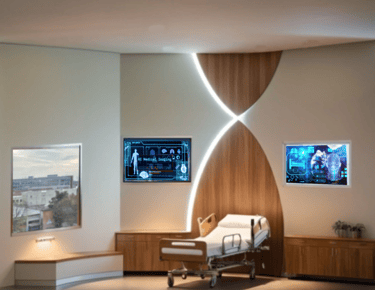

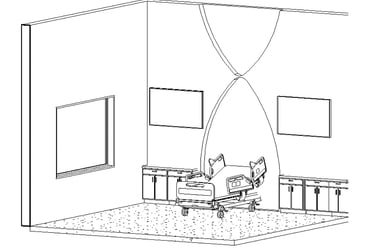

Personalized Health Hubs
These are the personalized healthcare hubs, located on the the first floor in the community and wellness sector of the West building. The idea is that patients, visitors, staff, or community members can come in and use these hubs to get a personalized health and fitness plan created by artificial intelligence. This is a way to incorporate healthy practices into the community aspect of our program and work on using AI to prevent illness rather than just treat it. Additionally, we wanted it to be a more approachable way for users to interact with AI to make it less daunting. The top image was designed in Revit and rendered in enscape. For the bottom one, I experimented with an AI program and input my first rendering into that software.
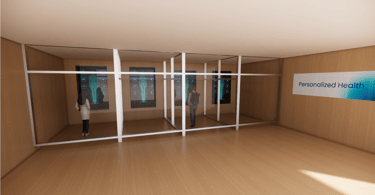

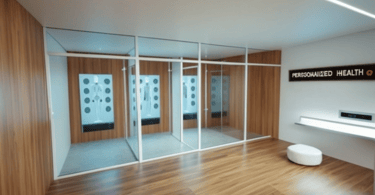

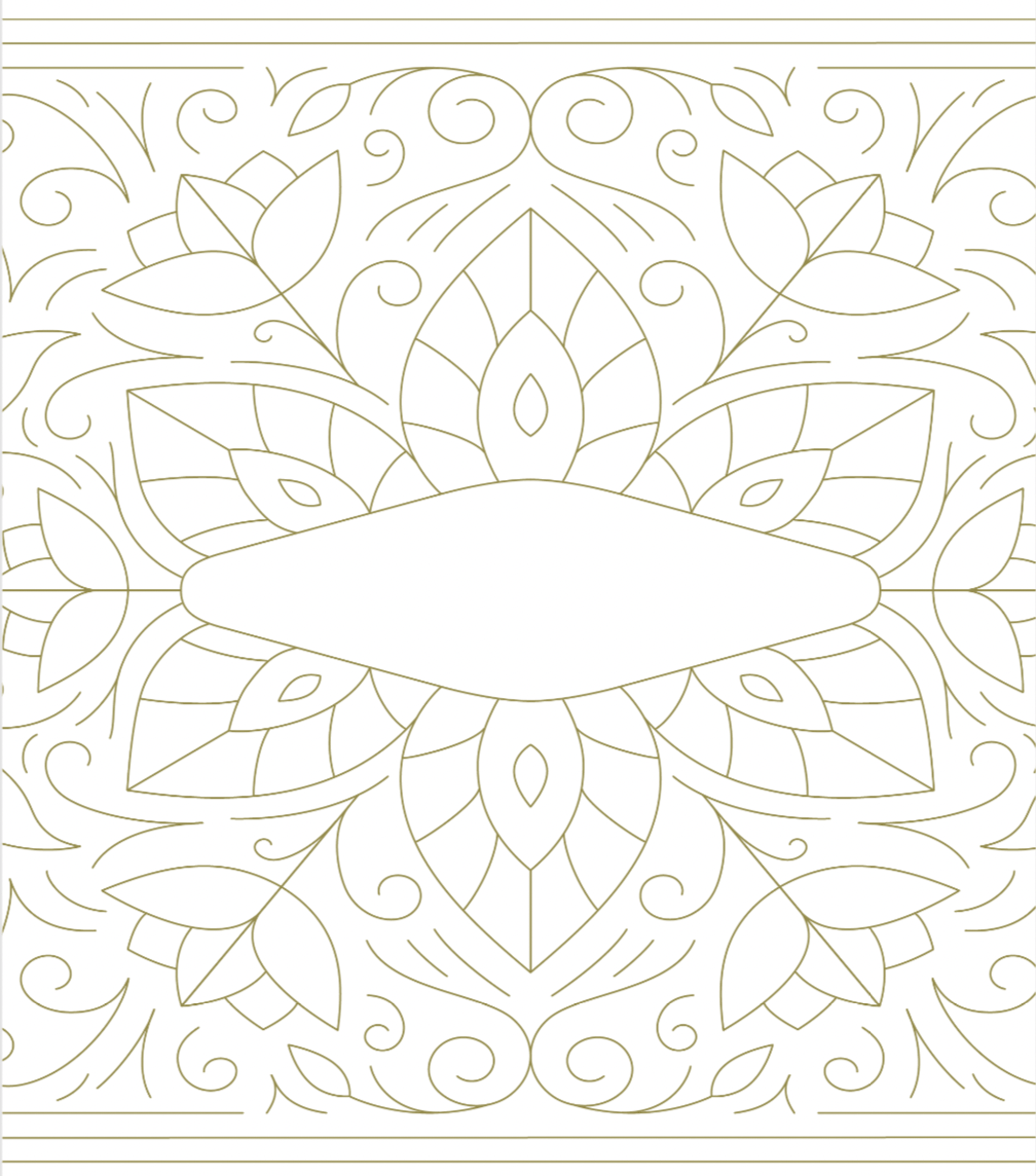
Contact Information
taylorvstone@gmail.com
(404) 245-6016
